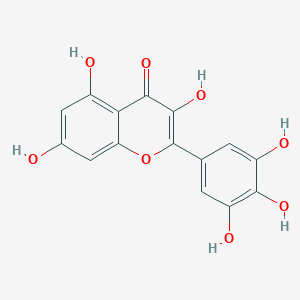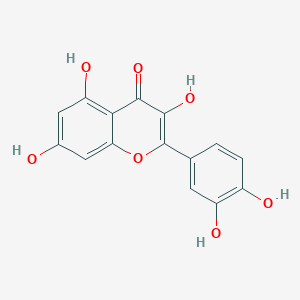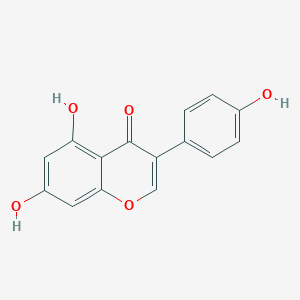Description
Myricetin is a polyphenolic compound that belongs to the flavonoid family and has antioxidant properties. It is frequently obtained from vegetables, fruits, nuts, berries, tea, and red wine. Myricetin is structurally similar to fisetin, luteolin, and quercetin and is thought to perform many of the same functions as these other flavonoids in the flavonol family. Myricetin has antioxidant qualities, according to research.
Benefits:
- Antioxidant Properties: Myricetin has strong antioxidant effects, helping to neutralize free radicals in the body and reduce oxidative stress.
- Anti-inflammatory Effects: It may help reduce inflammation, making it potentially beneficial in conditions like arthritis.
- Cancer Prevention: Some studies suggest myricetin may play a role in preventing certain types of cancer by inhibiting the growth of cancer cells.
- Heart Health: It could aid in reducing the risk of heart disease by improving cholesterol levels and blood pressure.
- Blood Sugar Control: Myricetin may help in managing blood sugar levels, which can be beneficial for individuals with diabetes.
Applications:
- Dietary Sources: Myricetin is found in foods like berries, fruits, vegetables, herbs, and nuts. It’s often consumed through a balanced diet rich in fruits and vegetables.
- Supplements: It is available in supplement form, either as myricetin itself or as part of a complex with other flavonoids.
Main Usage:
- Nutritional Supplements: Often used in health supplements aimed at providing antioxidant and anti-inflammatory benefits.
- Research Tool: In scientific studies, myricetin is used to explore its potential therapeutic effects in various diseases.
- Food Industry: Sometimes used as a natural food additive due to its antioxidant properties, contributing to the preservation of food quality and longevity.
- Cosmetic Industry: Occasionally found in skincare products for its antioxidant properties, which may help protect the skin from damage caused by environmental stressors.





